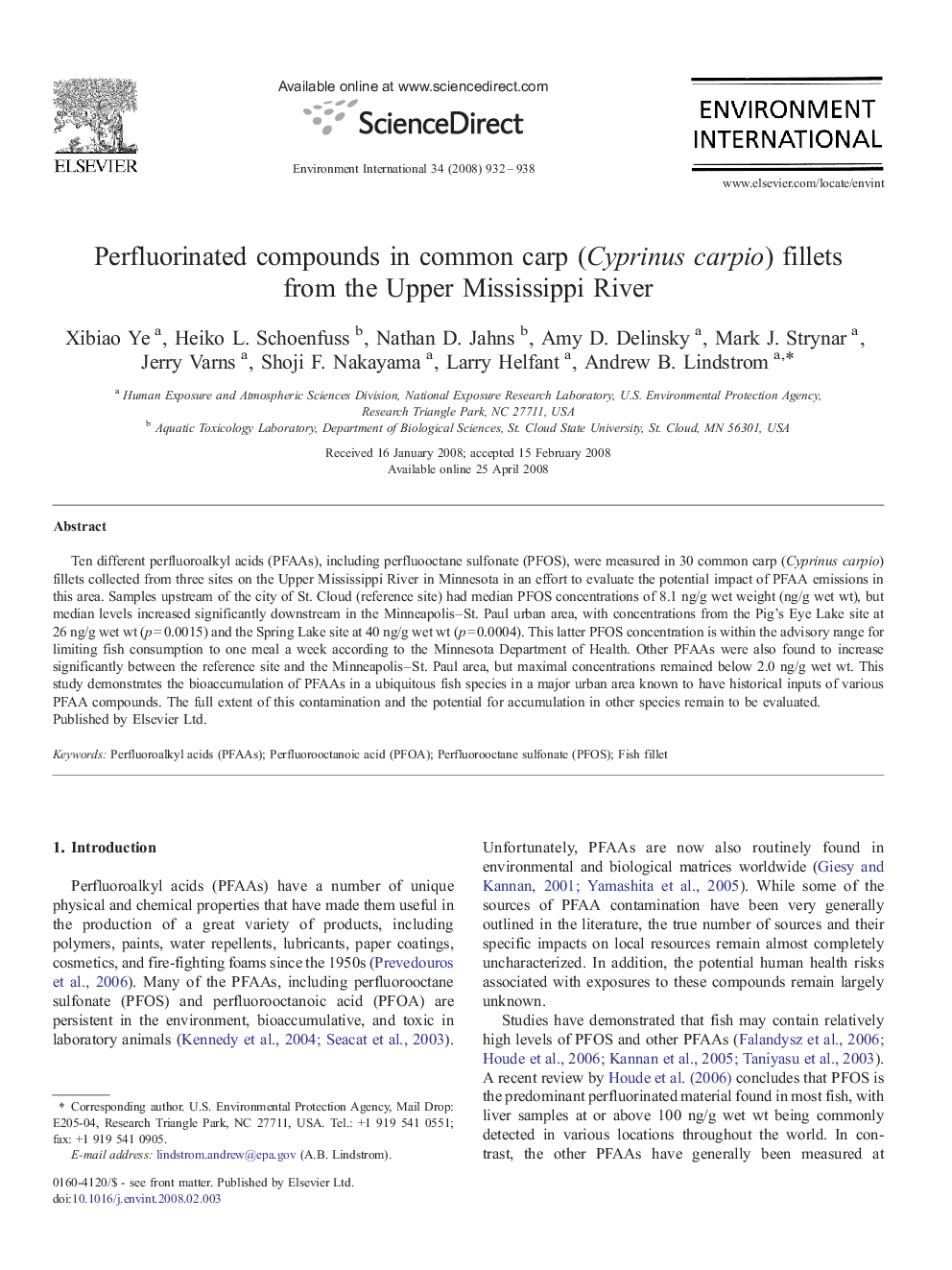| Article ID | Journal | Published Year | Pages | File Type |
|---|---|---|---|---|
| 4423685 | Environment International | 2008 | 7 Pages |
Ten different perfluoroalkyl acids (PFAAs), including perfluooctane sulfonate (PFOS), were measured in 30 common carp (Cyprinus carpio) fillets collected from three sites on the Upper Mississippi River in Minnesota in an effort to evaluate the potential impact of PFAA emissions in this area. Samples upstream of the city of St. Cloud (reference site) had median PFOS concentrations of 8.1 ng/g wet weight (ng/g wet wt), but median levels increased significantly downstream in the Minneapolis–St. Paul urban area, with concentrations from the Pig's Eye Lake site at 26 ng/g wet wt (p = 0.0015) and the Spring Lake site at 40 ng/g wet wt (p = 0.0004). This latter PFOS concentration is within the advisory range for limiting fish consumption to one meal a week according to the Minnesota Department of Health. Other PFAAs were also found to increase significantly between the reference site and the Minneapolis–St. Paul area, but maximal concentrations remained below 2.0 ng/g wet wt. This study demonstrates the bioaccumulation of PFAAs in a ubiquitous fish species in a major urban area known to have historical inputs of various PFAA compounds. The full extent of this contamination and the potential for accumulation in other species remain to be evaluated.
